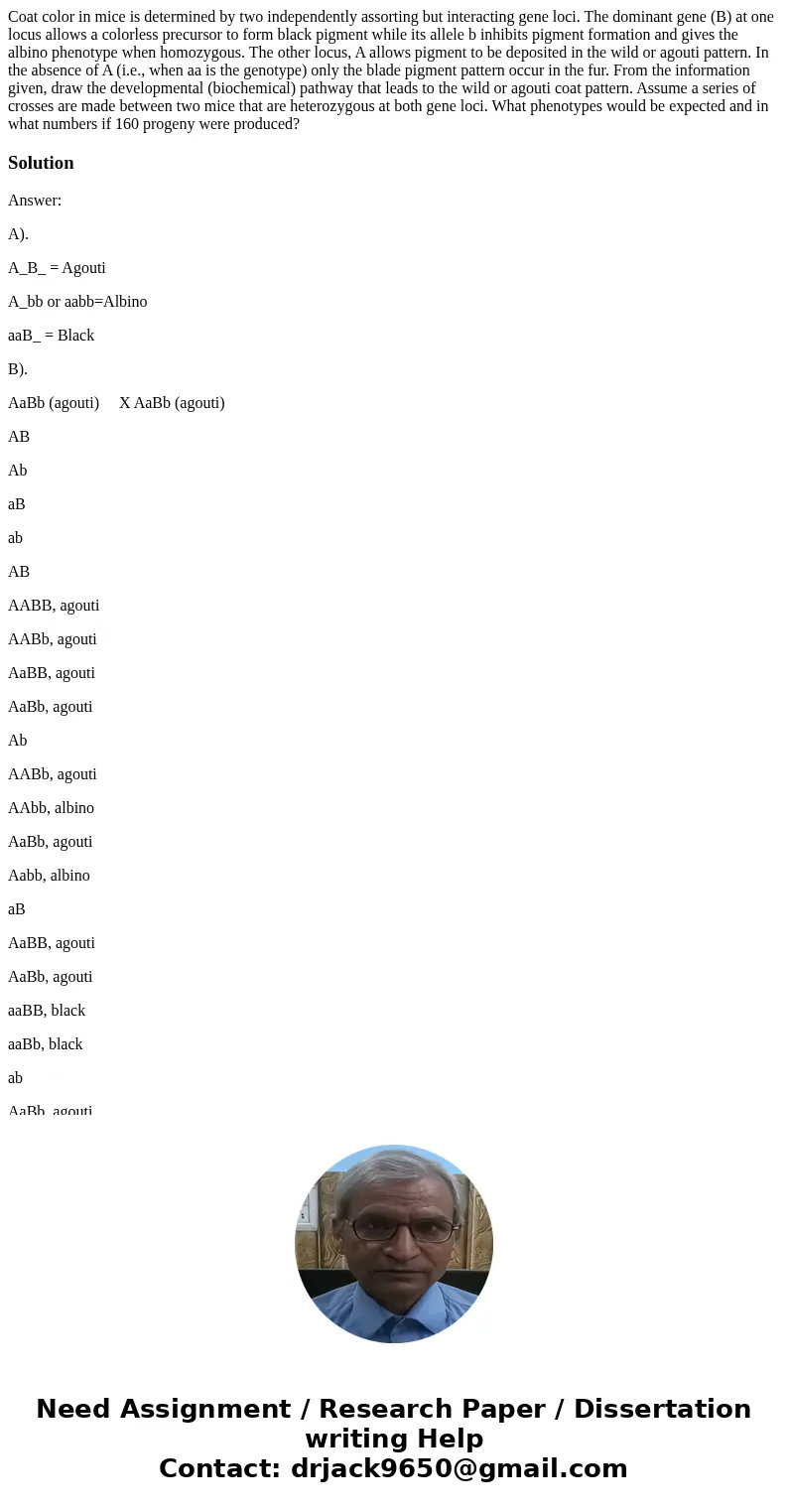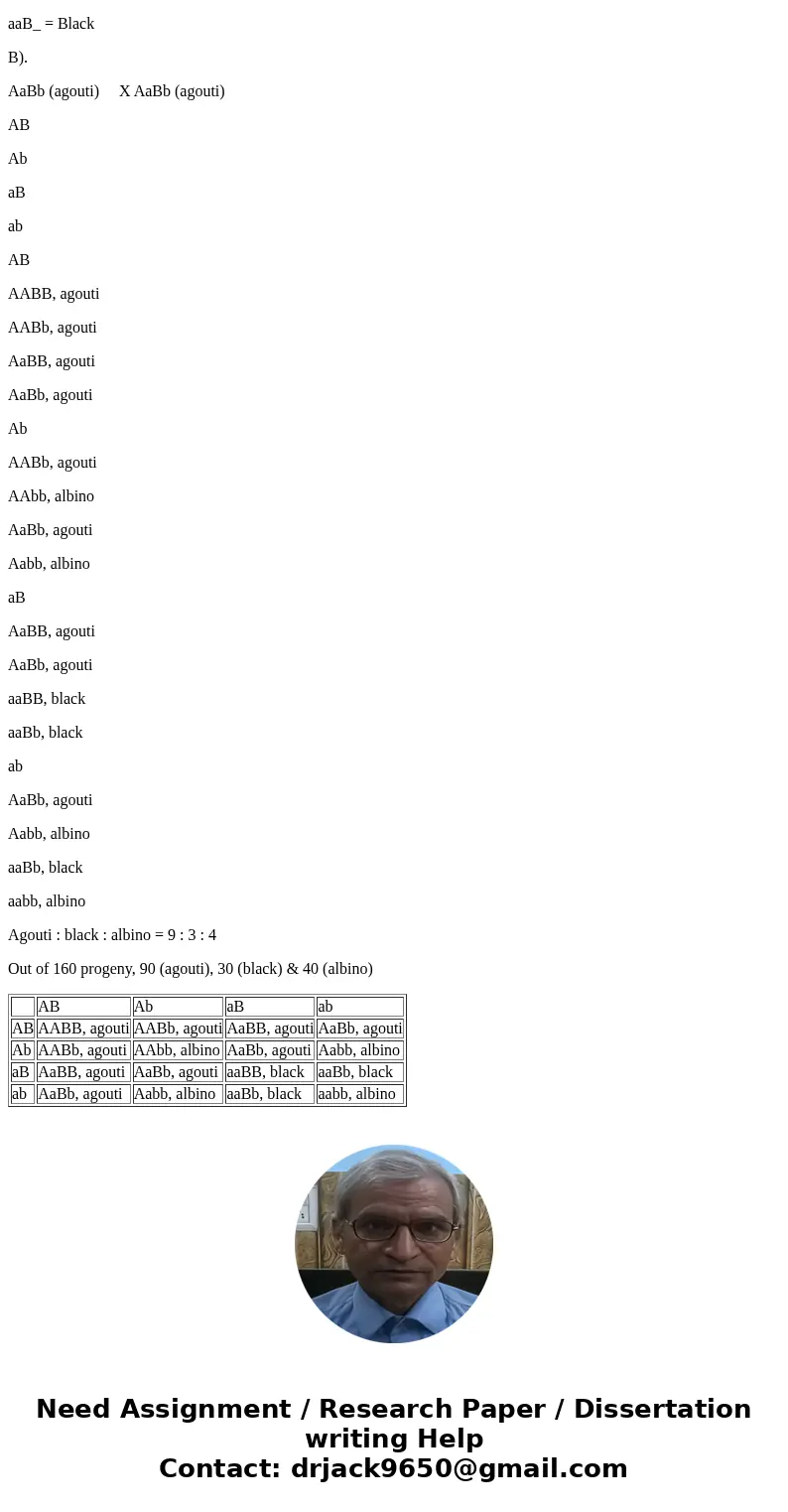Coat color in mice is determined by two independently assort
Coat color in mice is determined by two independently assorting but interacting gene loci. The dominant gene (B) at one locus allows a colorless precursor to form black pigment while its allele b inhibits pigment formation and gives the albino phenotype when homozygous. The other locus, A allows pigment to be deposited in the wild or agouti pattern. In the absence of A (i.e., when aa is the genotype) only the blade pigment pattern occur in the fur. From the information given, draw the developmental (biochemical) pathway that leads to the wild or agouti coat pattern. Assume a series of crosses are made between two mice that are heterozygous at both gene loci. What phenotypes would be expected and in what numbers if 160 progeny were produced?


Solution
Answer:
A).
A_B_ = Agouti
A_bb or aabb=Albino
aaB_ = Black
B).
AaBb (agouti) X AaBb (agouti)
AB
Ab
aB
ab
AB
AABB, agouti
AABb, agouti
AaBB, agouti
AaBb, agouti
Ab
AABb, agouti
AAbb, albino
AaBb, agouti
Aabb, albino
aB
AaBB, agouti
AaBb, agouti
aaBB, black
aaBb, black
ab
AaBb, agouti
Aabb, albino
aaBb, black
aabb, albino
Agouti : black : albino = 9 : 3 : 4
Out of 160 progeny, 90 (agouti), 30 (black) & 40 (albino)
| AB | Ab | aB | ab | |
| AB | AABB, agouti | AABb, agouti | AaBB, agouti | AaBb, agouti |
| Ab | AABb, agouti | AAbb, albino | AaBb, agouti | Aabb, albino |
| aB | AaBB, agouti | AaBb, agouti | aaBB, black | aaBb, black |
| ab | AaBb, agouti | Aabb, albino | aaBb, black | aabb, albino |


 Homework Sourse
Homework Sourse